By Adria Arch
Lately, I have been especially drawn to both two- and three-dimensional artwork that uses fabrics and fibers. The vibrant colors and patterns, sculptural shapes, and thumbing-the-nose at the traditional stone-and-steel crowd are all part of what I find extremely engaging. Many of the artists I’ve included here are belong to the vibrant Boston fiber-art scene right in my own backyard; others have international reputations
Joana Vasconcelos was new to me when I encountered her installation, Valkyrie Mumbet, at the MassArt Art Museum (MAAM). She is a feminist fiber artist who delights in pattern and color. Vasconcelos frequently uses items associated with domesticity and craft, including household appliances, fabric and crochet, to comment from a feminist perspective on national and collective identity, cultural traditions and women’s roles. Vasconcelos, in her first U.S. solo show, honors Elizabeth “Mumbet” Freeman, an enslaved woman whose court battle for her freedom in 1781 helped make slavery illegal in Massachusetts. The large-scale work seen below, the newest in her “Valkyries” series, is named after Norse female war goddesses and pays homage to inspiring women.
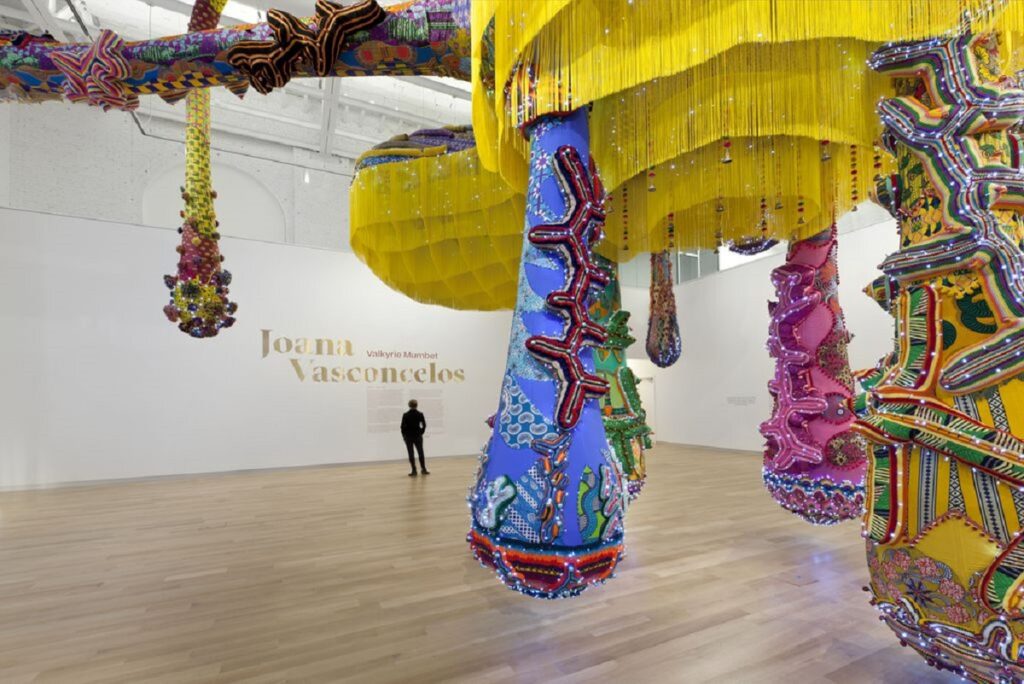
Vakyrie Mumbet (2020), installation shot (image courtesy MAAM, Mass College of Art Museum, Boston, MA)
Nari Ward’s work was exhibited at Boston’s Institute of Contemporary Art several years ago. He is known for his sculptural installations composed of discarded material found and collected in his Harlem neighborhood. He has repurposed objects such as baby strollers, shopping carts, bottles, doors, television sets, cash registers and shoelaces, among other materials. Ward recontextualizes his materials in thought-provoking juxtapositions that create complex, metaphorical meanings to confront social and political issues about race, poverty, and consumer culture. He intentionally leaves the meaning of his work open, allowing the viewer to provide his or her own interpretation.
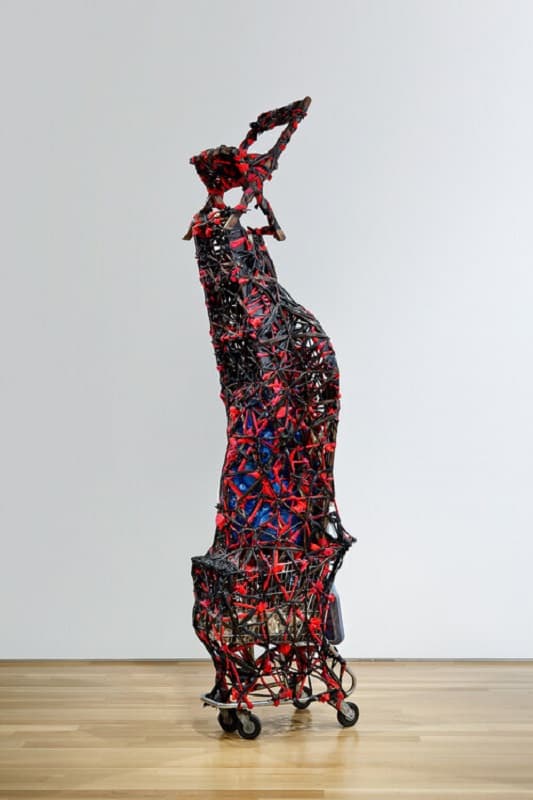
Nari Ward, Savior (1996) shopping cart, plastic garbage, bags, cloth, bottles, metal fence, earth, wheel, mirror, chair, and clocks 128 by 36 by 23 inches
Tschabalala Self is a young Black woman who uses fabric as paint in large-scale works celebrating Black life. I also first saw her work at Boston’s Institute of Contemporary Art, just before the pandemic shut down the museum, and was enormously moved. She has forged a singular style to explore ideas about the Black female body, using a combination of sewn, printed, and painted materials and traversing different artistic and craft traditions.
For the last 20 years, Shinique Smith has gleaned visual poetry from vintage clothing and explored concepts of ritual through tying, writing, and gestures inspired by her travels and early roots as a graffiti artist in Boston. Through her process, she builds a complex material vocabulary that deftly interweaves brushstrokes, private narratives, and symbolism for the viewer to divine and intuit. Smith’s practice reveals connections across space, time, and place to suggest the possibility of constructing worlds renewed by hope and delight.
Boston-based artist Samantha Fields makes “slowly” with and through craft. Making slowly, she says, “is a personal act of resistance against the fast-paced, multi-tasking, product-driven world in which I find myself.” As a multimedia artist, Fields engages with these processes as a survival mechanism and a conceptual strategy. Through these modes of making, she is able to explore different social constructs associated with the decorative: gender, class, professional/hobbyist, and the hierarchical categories of taste and morality.
Jodi Colella’s art incorporates many types of fiber applications. To quote the artist, her “durational handwork and fetishist focus embrace the ideals of labor, process and community.” Jodi is a colleague and a friend, and one of my favorite series of hers is “Headware.” The pieces were originally inspired by the collections of Historic Northampton, a local history museum, in Massachusetts. Each of the eight “hats” is uniquely strange and gorgeously made, and speaks about the hat as an indicator of class, status, and the occupation of the wearer.
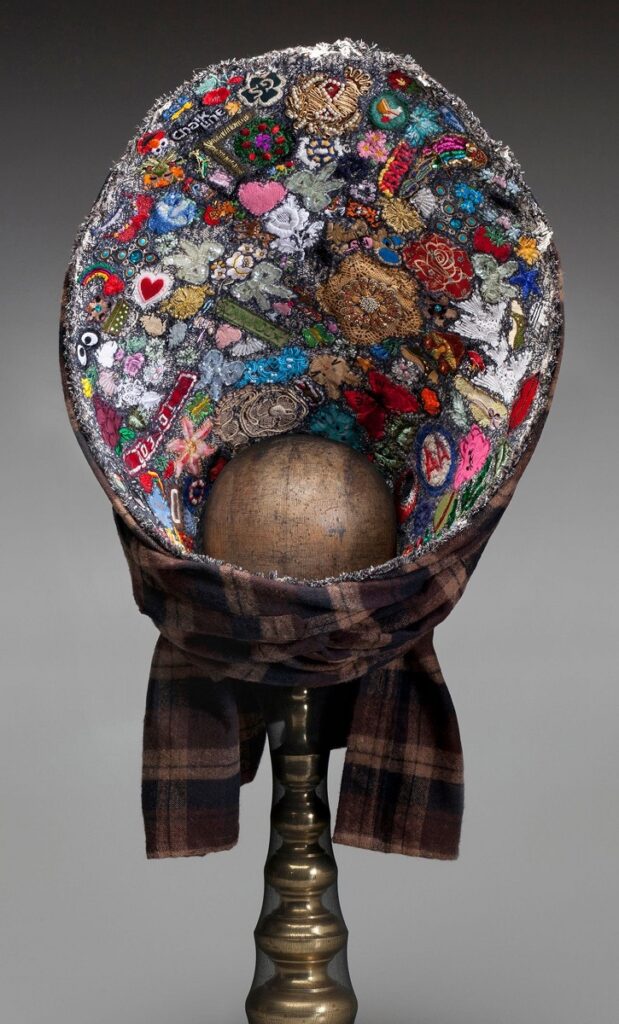
Jodi Colella, Poke (2017), found patches, wool flannel shirt, buckram, threads, 35 by 16 by 16 inches
Multimedia artist Sonya Clark’s work has been displayed at museums around the globe. With her sensitive, boldly imaginative eye, Clark addresses themes of race and identity and finds inspiration in the traditions of the textile and hair designs of the African diaspora. “I was born in Washington, DC, to a psychiatrist from Trinidad and a nurse from Jamaica,” she says. “I gained an appreciation for craft and the value of the handmade primarily from my maternal grandmother who was a professional tailor. Many of my family members taught me the value of a well-told story and so it is that I value the stories held in objects.”
Merill Comeau is a Boston based artist who uses both cloth and fiber. Comeau’s choice of materials and processes are informed by trauma and feminism; she employs worn fabrics of the domestic sphere and the mark-making of stitches to convey narratives about mending and endurance. Ninety percent of her materials are repurposed textiles — her mother-in-law’s blouse, a stained tablecloth, discontinued designer prints — each communicating identity and status while revealing lived lives and embodying memory.
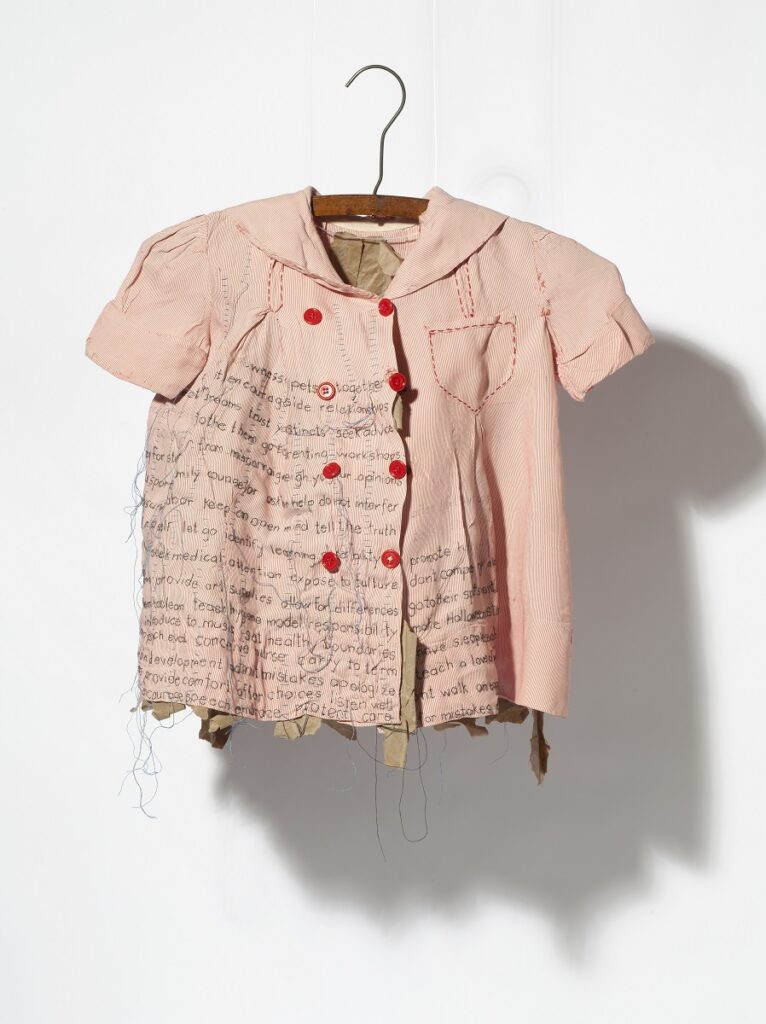
Merill Comeau, Mother, Daughter, Mother, They, Daughter (ongoing), vintage child’s dress, paper bag snippets, thread, 24 by 18 by 8 inches
Fabric is the art material of the people, for its ubiquity and its relative cost, and in the hands of these artists, it becomes a powerful and vibrant means of expression.
Adria Arch is a Boston-based artist working in paint, sculpture, and installation. She’s been a source for several posts on the site and is also the author of “The Other Art Fair.” Her show “Murmuration” was featured at the Boston Sculptors Gallery in April. An installation at the Brattleboro Art Museum in Vermont, “On Reflection,” is on view through June 12, and another, “Lost and Found,” can be seen at the Danforth Art Museum in Framingham, MA, through mid September.
Top: Installation view of Shabalala Self’s “Out of Body” at the Institute of Contemporary Art, Boston, 2020
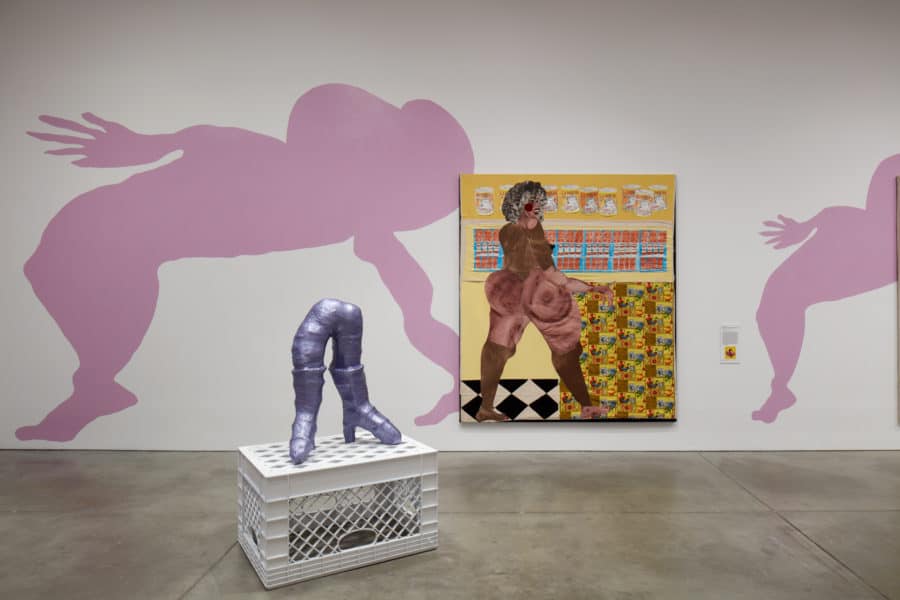
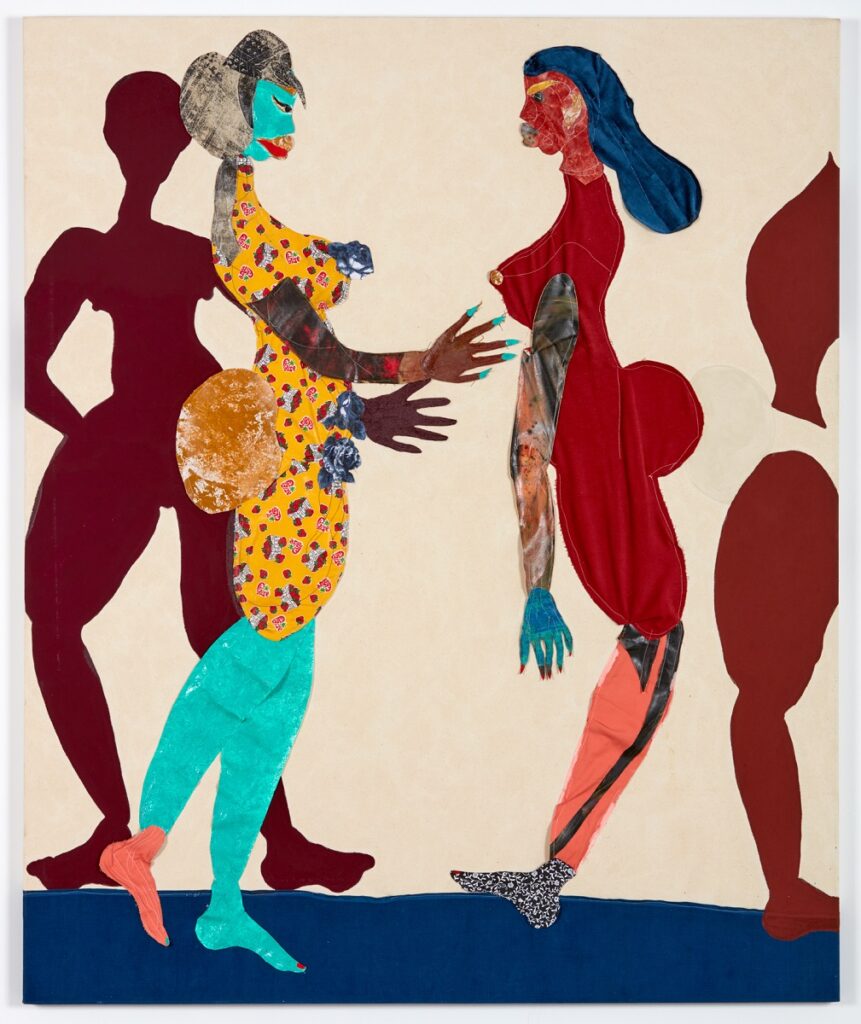
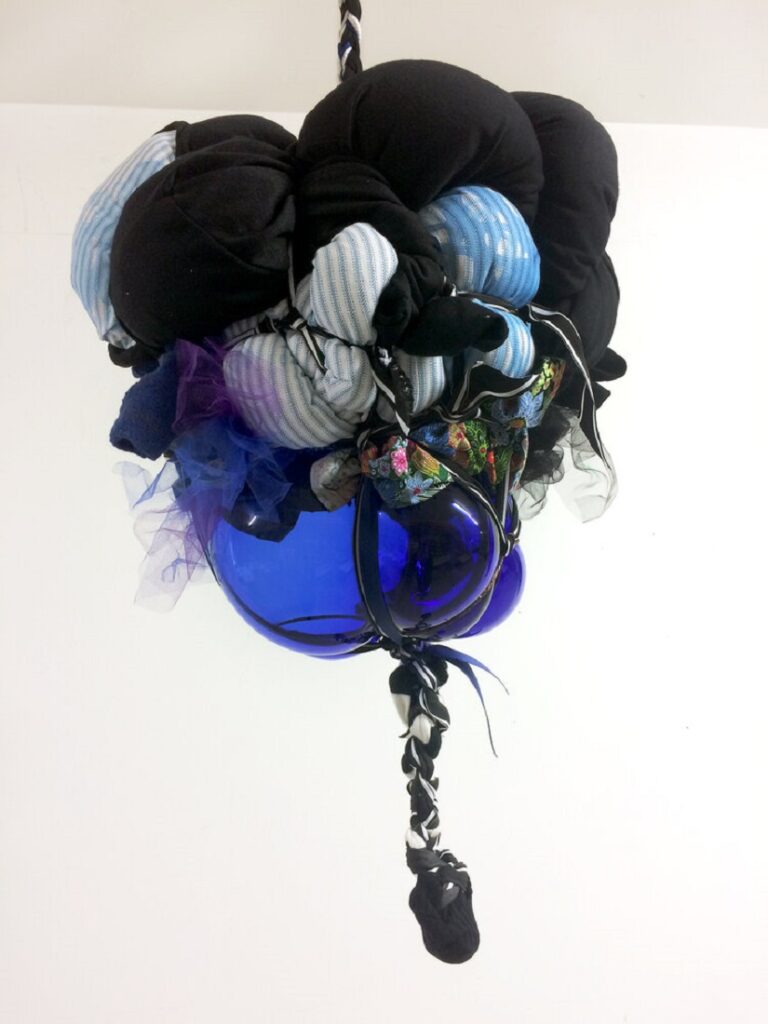
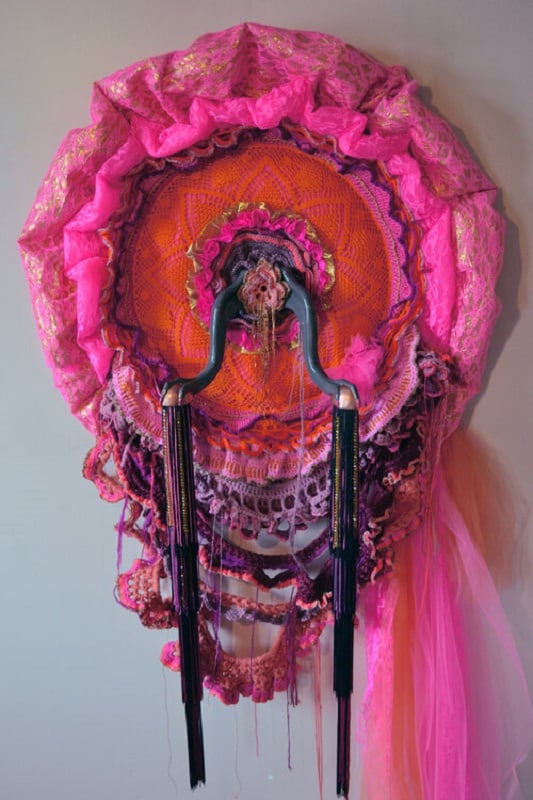
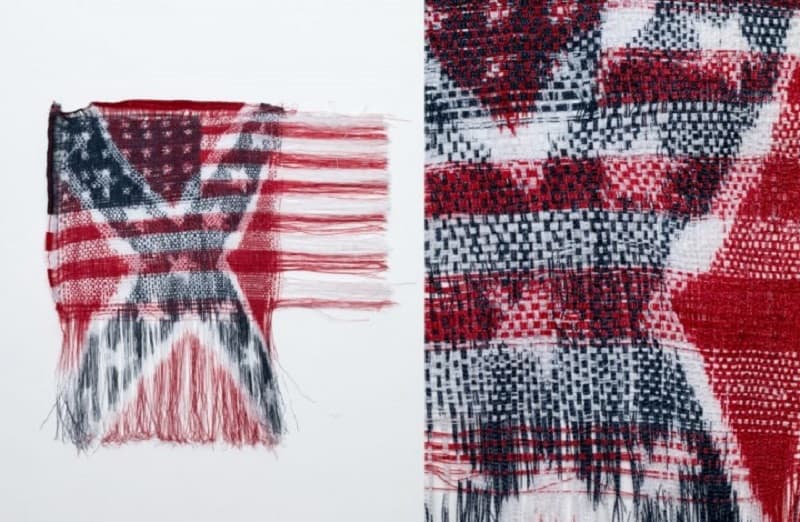
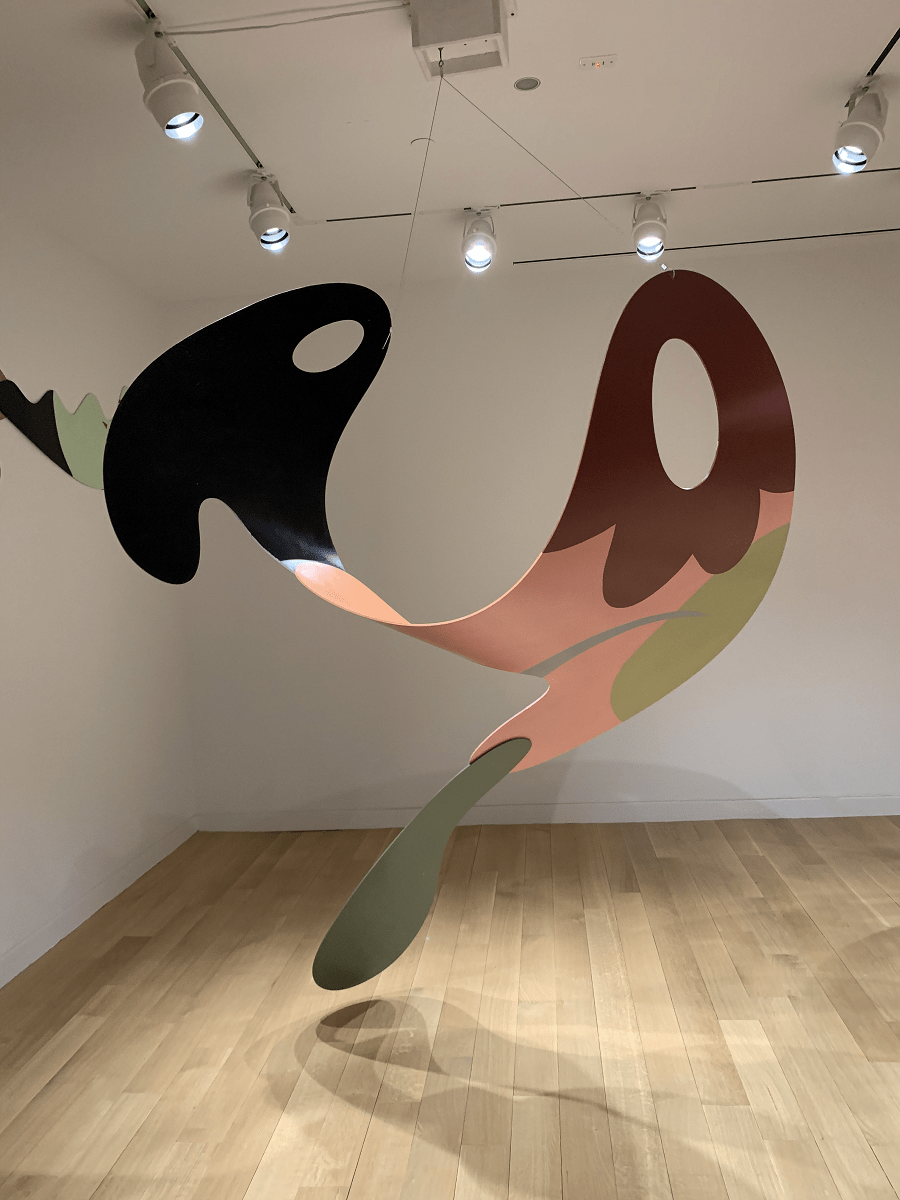
Hi Adria,
Thanks for putting this all together…very insightful and helpful to get a sense of what is out there!
cheers,
Jemi
These are excellent choices and an intriguing window into the uses of fibers. This is introducing me to many artists I do not know.
You have presented an interesting group of artists and ideas in this curation!